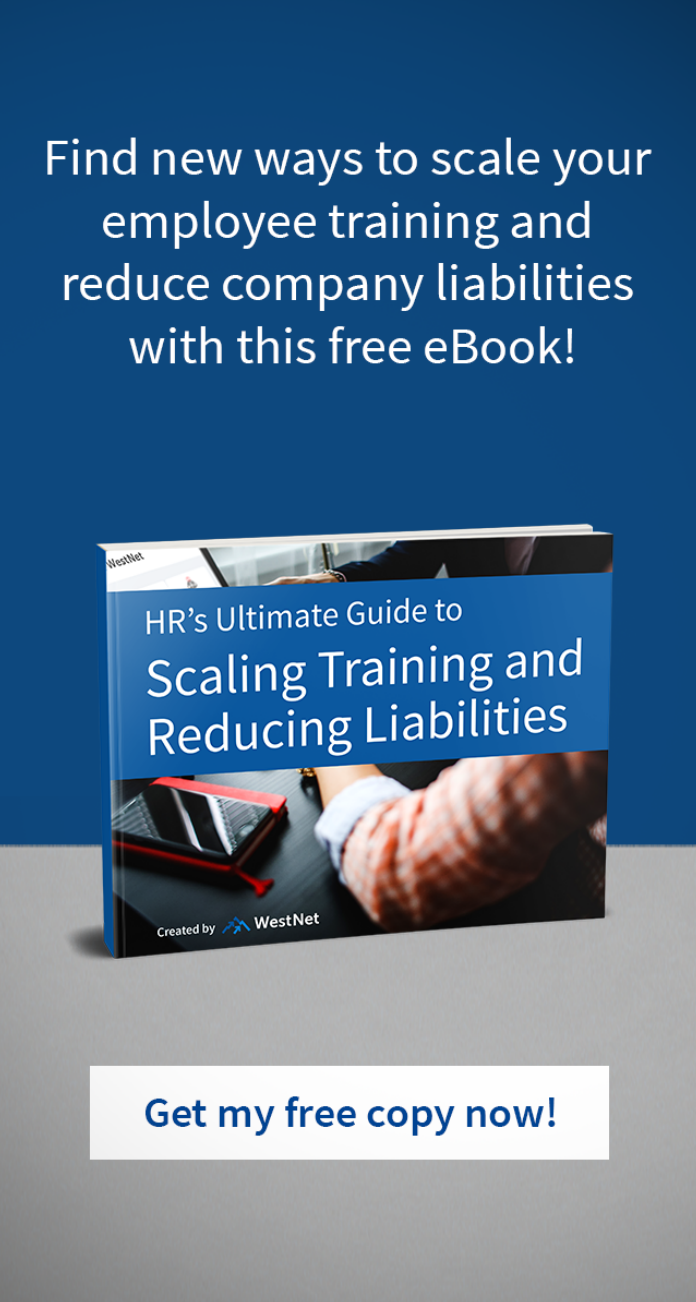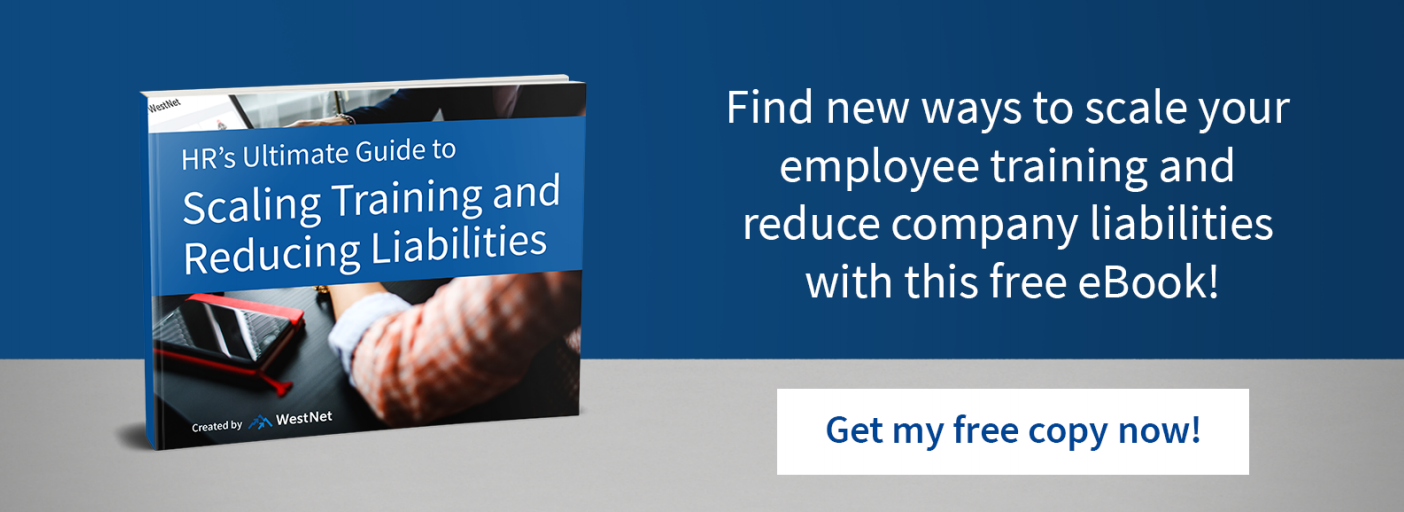It’s inescapable: workplace harassment is headline news, and many employers are faced with the challenge of finding new ways to promote risk management in these changing times.
The creation of a robust, comprehensive employee education plan is the best way to support workforce safety from harassment.
Workforce Safety From Harassment: Is Your Company Prepared?
Addressing workplace harassment is an imperative for companies of every size. Here’s why:
The Equal Employment Opportunity Commission aggressively enforces workplace harassment regulations. During the first nine months of 2018, the Equal Employment Opportunity Commission (EEOC) filed 66 lawsuits against employers on behalf of employees who asserted that they had been harassed in their place of work.
Workplace harassment lawsuit details are often made public, and they can have a devastating impact on your business reputation even if the complaint is later dismissed.
When the EEOC files a workplace harassment lawsuit, it may involve the agency holding a press conference and producing a press release that provides explicit details of the agency’s complaint.
The resolution of workplace harassment charges can be costly, even if the case never goes to trial. The agency received more than $398 million inclusive of voluntary settlements and litigation regarding workplace harassment. The national average cost of litigation defense in employee lawsuits was approximately $160,000 in 2017, based on a survey of over 1,200 small- to medium-sized businesses.
Companies may also be vulnerable to class action lawsuits and civil damages in addition to any judgments rendered in an employee lawsuit.
The number of lawsuits filed by the EEOC regarding sexual harassment jumped by 50% in just one year, between 2016-2017. Not only is workplace sexual harassment a trending news topic, it is also being reported more frequently. In 2018 alone, the EEOC received 7, 609 complaints of sexual harassment from individual employees.
In 2017, US companies had a 1 in 10 chance of having an employee file a lawsuit against them.
Employers paid more than $56 million to 1389 employees who withdrew or settled their sexual harassment claims without going to court.
You know that your company can’t afford to wait to address workplace harassment risks, but how do you start?
The Basics: An FAQ on Workforce Safety from Harassment
It is critical to know the official federal definitions of workplace harassment in order to maintain compliance.
What is workplace harassment?
Harassment is unwelcome conduct that references race, skin color, a religious faith or status, sex, pregnancy status, national origin, age (40 or older), disability or genetic history.
Is all unwelcome employee or employer conduct considered unlawful harassment by the EEOC?
No. According to the EEOC, the conduct must create an environment that would be considered hostile, intimidating, abusive, or offensive to a “reasonable” person (language used by the EEOC).
When does harassment become unlawful?
When an employee must endure harassment in order to keep their job, and the work environment is consistently intimidating, hostile, and abusive.
What are some examples of the hallmarks of an abusive or hostile work environment?
If an employee must repeatedly experience the following as a part of their regular work environment, then they may be the victims of workplace harassment according to EEOC regulations:
- Offensive jokes
- Slurs
- Epithets or name-calling
- Physical assaults or threats
- Unnecessary touching
- Intimidation
- Ridicule or mockery
- Insults or put-downs
- Offensive objects or pictures
- Unwelcome sexual advances
- Requests for sexual favors
- Verbal or physical harassment of a sexual nature
- Interference with work performance
Who can be named as a perpetrator of workplace harassment?
A direct supervisor or a member of management, an agent of the company, a co-worker, or a non-employee.
Who is liable for workplace harassment by supervisors, non-supervisory employees, and non-employees?
The employer will be held liable for harassment by a supervisor if a negative employment action such as termination or the failure to promote the employee based on merit is connected to the employee’s complaint or corrective opportunities provided by the employer.
An employer is also liable for harassment by non-supervisory employees or non-employees at the workplace if the harassment was known and the employer failed to take prompt, corrective action.
Does the victim have to be directly impacted?
No. Even someone who is not the target of the harassment can file a complaint if they have been affected by it.
What if the victim stays in their job despite the harassment? Does this diminish their claim?
No. Unlawful harassment may occur without economic injury to the victim.
Can an employee be disciplined for filing a workplace harassment complaint or lawsuit?
No. If the employee is performing well otherwise and they are not violating the terms of their current employment contract, disciplining them for filing a workplace harassment claim is unlawful.
Read the full article at the EEOC website.
It’s Time to Act: Basic Principles for Creating a Workplace Harassment Prevention Program
Workplace harassment education is at the heart of a successful employee risk avoidance policy. It is vital that employers have an active educational plan in place to provide guidance to employees.
The EEOC recommends the following guidelines when establishing your workplace safety program:
Educational Structure
Provide an engaging live or online interactive compliance education program that is on-going and accessible to every team member.
Survey and maintain compliance awareness through continuing education and frequent employee assessments
Content of Compliance Training for All Employees
Present detailed narratives describing illegal harassment, and the conduct that may become illegal harassment.
Educate employees about their rights and responsibilities under current EEOC regulations
Provide instructions for initiating a workplace harassment report.
Content of Compliance Training for Managers and First-line Supervisors
Present detailed instructions on how to deal with workplace harassment at each level of the organization, including sanctions and reporting processes.
Provide management and supervisors with clear directions on how to identify workplace harassment risk factors.
Read the full article at the EEOC website.
WestNet learning provides a user-friendly structure for comprehensive employee risk avoidance training.
Using the WestNet Learning LMS is the easiest way to ensure that employees know how to comply with anti-harassment standards. The platform supports self-paced learning and promotes seamless continuing education, allowing employees to easily return to where they left off studying to reinforce key concepts.
When your workforce needs to be updated on a pressing issue or a change to a regulatory standard, you can change content within the LMS easily. With our LMS, your employees can be kept up-to-date with the latest EEOC and state workplace harassment regulations effortlessly. Ready to take the guesswork out of risk avoidance education?
WestNet Learning is an all-in-one, LMS solution to help growth and safety needs. Customized eCourses, analytics, reporting, and certifications help management & staff stay on top of what matters most.
If you are looking to learn more about how to improve the safety of your staff and reduce workplace harassment, reach out to us for a 1-on-1 strategy session today!

